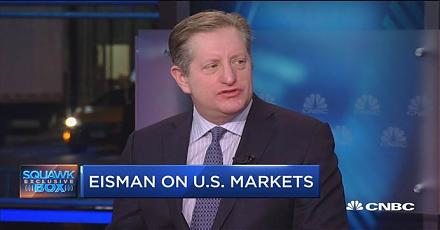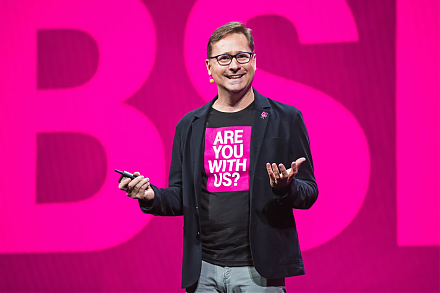

2020-09-17 12:28:00 Thu ET
lean startup distinctive capabilities proprietary assets leadership competitive advantages okr team leaders specialists advisors iterative continuous improvements culture changes agility senior managers rare resources core competences core business operations seamless systems execution business model dual transformation strategic solutions tactical solutions
Many successful business organizations develop their distinctive capabilities and unique value propositions for strategic reasons.
Paul Leinwand and Cesare Mainardi with Art Kleiner (2016)
Strategy that works: how winning companies close the strategy-to-execution gap
Many successful business organizations strive to close the gap between corporate strategy and execution by developing their distinctive capabilities and unique value propositions in response to both customer demands and external circumstances. These distinctive capabilities empower most profitable companies such as Apple, Amazon, IKEA, Starbucks, and so on to form coherent strategies and portfolios of complementary products and services. These companies often commit to unique social causes and purposes. Instead of chasing business growth, these companies define themselves by what they strive to achieve in due course (not just what they try to sell in the short run). Each of these companies differentiates itself with a new social identity on the basis of its main strengths in response to external competitive forces. Instead of focusing on functional excellence, these business organizations blueprint and build up their unique cross-functional distinctive capabilities in order to translate corporate strategies into sales, profits, and sustainable cash flows.
Instead of fighting its corporate culture, each of these highly profitable companies identifies and leverages the parts of team culture that work in their favor. In effect, this positive team culture reinforces the distinctive capabilities and further breeds collaboration across business functions. These companies combine the essential elements of emotional commitment, mutual accountability, and collective mastery in order to cultivate the unique team culture of both business agility and innovation. Instead of cutting costs across the board, these companies cut costs strategically to invest in the particular core business systems and processes in support of their distinctive capabilities and unique value propositions. Instead of reacting to broad market changes, these highly coherent companies shape their future industries by continually recharging their core competences, business systems, and capabilities etc in response to new customer demands and external competitive forces.
Business coherence helps fill the gap between corporate strategy and execution.
Coherent companies close the gap between corporate strategy and execution by ensuring better alignment among their unique value propositions, distinctive skills and capabilities, and proprietary assets and services. Each core value proposition sets the business organization apart from its closest rivals. A set of distinctive skills and capabilities can empower the coherent company to deliver on its unique value proposition. In due course, effective corporate strategies connect these distinctive capabilities to the proprietary mix of product differentiation, service innovation, and cost leadership for better sales, profits, and sustainable cash flows.
IKEA performs as a coherent business organization that embraces the 5 main acts of product market leadership. Its core value proposition involves enriching the day-to-day lives of many households. IKEA has built its own distinctive capabilities and business systems etc to support this unique value proposition in the form of myriad home furniture items. This systemic view comprises greater comprehension of how customers live at home; price-conscious and stylish product design; both efficient and scalable continuous flow of key logistic operations; and customer-centric retail market development. IKEA now serves as the largest global home furniture brand. As the company continues to evolve over time, IKEA now defines its social identity in broader terms of the Nordic love for life and so serves fresh international markets with the same unique identity and lifestyle considerations.
An authentic organizational identity both conveys and explains why each agile lean enterprise performs well to distinguish itself from all the other relevant rivals, peers, and competitors. In order to develop core competences and distinctive capabilities, each agile lean enterprise must focus on what sets itself apart from all others. The agile lean business organization must strive to acquire what empowers all relevant senior managers, strategic advisors, subject matter experts, specialists, and other team members to create sustainable value in many important ways that most other companies cannot.
Several world-class public corporations such as Apple and Starbucks sustain their true and powerful social identities. From time to time, Apple challenges the status quo, bucks the conventional wisdom, and upholds the unique value proposition of disruptive innovation in online connections, mobile devices, and digital applications for better overall user experience. Starbucks continues to provide unique customer value in the form of both premium coffee and healthy food. This unique proposition accords with the Nordic concept of love for life, liberty, and the pursuit of happiness. Another good world-class example is the Haier Group, which serves as one of the greatest global appliance makers. Haier designs and develops practically useful electronic appliances and solutions. Its unique product differentiation and service innovation both help address many daily problems that people encounter at home. All of these corporations apply their proprietary core competences and distinctive capabilities to excel at their niche specialties in accordance with their longer-term social identities. As most agile lean enterprises pull together team work streams to close their gaps between corporate strategy and execution, these enterprises often need to connect key strategic concerns to their social identities.
A systemic view of core competences and distinctive capabilities often comprises 5 to 7 primary business strengths, competitive moats, and first-mover advantages. These effective strengths help differentiate each agile lean enterprise from its rivals, peers, and competitors in the broader business context. In a nutshell, these fresh business strengths and advantages empower the lean enterprise to deliver on its unique value proposition in response to customer demands and competitive forces, conditions, and circumstances etc. Iterative continuous improvements and product feature enhancements often help the agile lean enterprise fulfill its lofty noble social causes and purposes in accordance with the timeless longer-run corporate identity. In a fundamental view, the broader corporate system of distinctive capabilities is highly specific to each lean enterprise as it is difficult for most other competitors to emulate these proprietary assets and first-mover strengths.
Distinctive capabilities, proprietary assets, and many other business strengths can be quite powerful, but these main competitive advantages are often slow to change. Most business organizations cannot change their unique social identifies with new distinctive capabilities overnight. True business agility arises from the core pursuit of fresh opportunities as each agile lean enterprise competes more effectively with its unique distinctive capabilities, internal moats, and first-mover advantages. Each agile lean enterprise can build up distinctive capabilities and many other business strengths through market growth, fringe market expansion, high skill development, creative product design, customer service management, and disruptive innovation.
Most business leaders must translate their strategic visions and purposes into day-to-day core business operations and cross-functional team processes.
Once the agile lean enterprise anchors its social identity to close the gaps between corporate strategy and execution, both business leaders and senior managers can strive to transform their strategic visions and purposes into key business processes and operations. The broad blueprint of distinctive capabilities helps promote cross-functional team collaboration for all relevant senior managers, specialists, special advisors, subject matter experts, and other team members to steer major business decisions. Both business leaders and senior managers must carefully assess how the distinctive capabilities empower the agile lean enterprise to outperform its rivals and competitors, how these capabilities shape the future industries in 5 to 10 years, and how these distinctive capabilities evolve over time to cause structural changes in both proprietary assets and disruptive innovations. Instead of passively reacting to external competitive forces, both business leaders and senior managers should proactively broaden their systemic view of distinctive capabilities in order to better predict what the future industries can become in due course.
The next logical step is for both business leaders and senior managers to build up the essential distinctive capabilities that can differentiate highly profitable agile lean enterprises from the rest. These business leaders often need to empower all team members to learn from their mistakes, errors, and even epic failures to continually sharpen the saw. Iterative continuous improvements become both necessary and important in this context. Also, both business leaders and senior managers should aim to design new business practices that most other competitors cannot emulate. Sometimes it can be worthwhile for both business leaders and senior managers to think outside the box to consider some major mergers and acquisitions. Both M&A deals and R&D investment projects can empower the agile lean enterprise to attain critical distinctive capabilities and tech advances within a reasonable time frame.
Once the distinctive capabilities pass muster with its generic proof of concept, the senior executive committee can strive to scale up the core business operations to boost sales, profits, and sustainable net income streams over time. Both business leaders and senior managers must form high-skill cross-functional teams of subject matter experts to rise to the common challenge that most business problems often transcend functional boundaries. Over the typical business lifecycle, both business leaders and senior managers can choose to establish permanent divisional teams, their respective heads, and longer-term strategic solutions via internal promotions. Senior managers bear the responsibility for codifying some institutional knowledge as formal rules, clear standards, and best practices etc; otherwise, this institutional knowledge remains tacit in the minds of both key people and their team members. In essence, these rules and standards can help scale up core business operations and team processes etc. At any rate, however, both business leaders and senior managers must resist the temptation to standardize too much. Key cross-functional teams should remain small enough to promote creative team dynamism for better sustainable and disruptive innovations etc.
Most business leaders must build up both the rational and emotional elements of organizational culture one day at a time.
With respect to organizational culture, most team members can share core values, social causes, purposes, mindsets, and behaviors. This team culture often shapes the prevalent best practices in core business operations and processes. From time to time, both business leaders and senior managers must learn to connect cultural memes to the distinctive capabilities, core competences, competitive moats, and first-mover advantages. The dynamic interplay between distinctive capabilities and cultural memes molds the organic growth trajectory for most agile lean enterprises. For instance, Starbucks team partners speak to their genuine love for coffee and the warm ambiance of a barista-style establishment. At Qualcomm, several senior engineers often exhibit persistence and perseverance in solving complex technical problems. These senior engineers often continue to foster team camaraderie and determination in the wider competitive industry landscape even when others doubt whether Qualcomm can overcome the recurrent technical issues and challenges.
Apart from all the differences in their corporate cultures, most coherent enterprises demonstrate 3 major cultural roots: emotional commitment, mutual accountability, and collective mastery. When most team members feel that their work contributes to the social identity, image, and purpose of their agile lean enterprise, these team members are more likely to view overall corporate success as the natural result of their team work streams. As a consequence, these team members become more proactive in applying their subject matter expertise and institutional knowledge to work together toward the ultimate corporate goals of both sustainable profitability and disruptive innovation over time. As most team members work together toward the same corporate goals, these team members are more likely to collaborate with one another. This team dynamism can help encourage trust and a strong sense of responsibility. As a result, this mutual accountability mechanism proves to be more effective than hierarchical command-and-control management for team members to attain sufficient incremental progress in due course. When most team members understand how their team work streams fit into the good social causes, purposes, and corporate identities, the work becomes both meaningful and valuable as these team members collaborate across functional boundaries to accomplish both small wins and major milestones along the arduous business journey. In due course, this collective team mastery helps attract high-caliber talent. Both business leaders and senior managers must often learn to engage in collective team mastery to connect the dots between corporate strategy and execution.
Agile lean enterprises that manage to close the gaps between corporate strategy and execution spend more capital and personnel resources on proprietary assets, business operations, systems, and processes and then outsource almost all non-core technical functions to external third-party service providers. In this unique way, these lean enterprises treat most costs as essential investments in their respective core business operations. In effect, most agile lean enterprises only cut costs when these costs pertain to non-core non-proprietary assets, business operations, and other work streams. As both business leaders and senior managers pull together internal team work resources to transform real growth options into new proprietary assets with sustainable cash flows, this dual transformation shines light on the new powerful distinctive capabilities, competitive moats, and first-mover advantages. In essence, these agile lean enterprises manage to cut costs strategically in order to fund their distinctive capabilities and most other competitive advantages in support of the unique long-term value proposition.
As agile lean enterprises continue to adapt to structural changes in both customer demands and external circumstances, both business leaders and senior managers must remain true and authentic to their unique social causes and identities. These senior executive team members must learn to connect the dots between distinctive capabilities and new customer demands. The resultant core business operations thus focus on the essential products and services that only the internal teams can offer. In due time, this corporate coherence can empower agile lean enterprises to dominate in their respective blue-ocean markets with little competition.
This analytic essay cannot constitute any form of financial advice, analyst opinion, recommendation, or endorsement. We refrain from engaging in financial advisory services, and we seek to offer our analytic insights into the latest economic trends, stock market topics, investment memes, personal finance tools, and other self-help inspirations. Our proprietary alpha investment algorithmic system helps enrich our AYA fintech network platform as a new social community for stock market investors: https://ayafintech.network.
We share and circulate these informative posts and essays with hyperlinks through our blogs, podcasts, emails, social media channels, and patent specifications. Our goal is to help promote better financial literacy, inclusion, and freedom of the global general public. While we make a conscious effort to optimize our global reach, this optimization retains our current focus on the American stock market.
This free ebook, AYA Analytica, shares new economic insights, investment memes, and stock portfolio strategies through both blog posts and patent specifications on our AYA fintech network platform. AYA fintech network platform is every investor's social toolkit for profitable investment management. We can help empower stock market investors through technology, education, and social integration.
We hope you enjoy the substantive content of this essay! AYA!
Andy Yeh
Chief Financial Architect (CFA) and Financial Risk Manager (FRM)
Brass Ring International Density Enterprise (BRIDE) ©
Do you find it difficult to beat the long-term average 11% stock market return?
It took us 20+ years to design a new profitable algorithmic asset investment model and its attendant proprietary software technology with fintech patent protection in 2+ years. AYA fintech network platform serves as everyone's first aid for his or her personal stock investment portfolio. Our proprietary software technology allows each investor to leverage fintech intelligence and information without exorbitant time commitment. Our dynamic conditional alpha analysis boosts the typical win rate from 70% to 90%+.
Our new alpha model empowers members to be a wiser stock market investor with profitable alpha signals! The proprietary quantitative analysis applies the collective wisdom of Warren Buffett, George Soros, Carl Icahn, Mark Cuban, Tony Robbins, and Nobel Laureates in finance such as Robert Engle, Eugene Fama, Lars Hansen, Robert Lucas, Robert Merton, Edward Prescott, Thomas Sargent, William Sharpe, Robert Shiller, and Christopher Sims.
Follow AYA Analytica financial health memo (FHM) podcast channel on YouTube: https://www.youtube.com/channel/UCvntmnacYyCmVyQ-c_qjyyQ
Follow our Brass Ring Facebook to learn more about the latest financial news and fantastic stock investment ideas: http://www.facebook.com/brassring2013.
Free signup for stock signals: https://ayafintech.network
Mission on profitable signals: https://ayafintech.network/mission.php
Model technical descriptions: https://ayafintech.network/model.php
Blog on stock alpha signals: https://ayafintech.network/blog.php
Freemium base pricing plans: https://ayafintech.network/freemium.php
Signup for periodic updates: https://ayafintech.network/signup.php
Login for freemium benefits: https://ayafintech.network/login.php
If any of our AYA Analytica financial health memos (FHM), blog posts, ebooks, newsletters, and notifications etc, or any other form of online content curation, involves potential copyright concerns, please feel free to contact us at service@ayafintech.network so that we can remove relevant content in response to any such request within a reasonable time frame.
2017-04-01 06:40:00 Saturday ET

With the current interest rate hike, large banks and insurance companies are likely to benefit from higher equity risk premiums and interest rate spreads.
2018-11-11 13:42:00 Sunday ET

Michael Bloomberg provides $80 million as campaign finance for Democrats to flip the House of Representatives in the November 2018 midterm elections, gears
2025-10-06 10:27:00 Monday ET

Stock Synopsis: With a new Python program, we use, adapt, apply, and leverage each of the mainstream Gemini Gen AI models to conduct this comprehensive fund
2018-10-21 14:40:00 Sunday ET

President Trump floats generous 10% tax cuts for the U.S. middle class ahead of the November 2018 mid-term elections. Republican senators, congressmen, and
2022-11-25 09:29:00 Friday ET

Uniform field theory of corporate finance While the agency and precautionary-motive stories are complementary, these stories can be nested as special cas
2025-08-09 11:31:00 Saturday ET

Wharton e-commerce entrepreneurship professor Dr Karl Ulrich explains that many top-notch universities now provide massive open online courses (MOOCs) for m